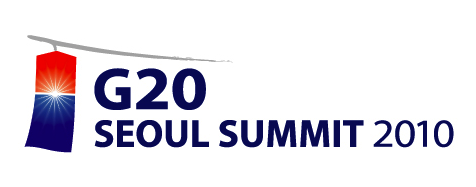As the G-20 gears up to meet next month in Seoul, it is not surprising that the United States and China are at loggerheads.
The "clash of systems" between America, the borrower and consumer, and China, the saver and manufacturing exporter, has generated an imbalance in the global economy that, if not corrected, threatens the peace and prosperity that has so far been achieved through globalization. That correction cannot occur overnight and cannot be economic alone. It depends ultimately on the recalibration of democracy in both the West and East.
In China's case, further democratization would include free labor unions and expanded rights for the rapidly growing urban middle class. Less censorship and more robust forms of political accountability would aid the reorientation of its juggernaut from export-led growth toward domestic consumption. Such changes would inevitably make the well-being of the household competitive, as a political priority, with the factory.
China might learn from the policies of Asia's development pioneers -- Japan, South Korea or Taiwan -- where income became more evenly spread as wages rose to capture productivity increases, and a credible safety net was put in place with high and broad levels of investment in education to enable the next generation to move up the value-added ladder. All these neighbors of China managed a middle-income transition by establishing the reliable rule of law that made government accountable, through freer expression and some sense of social security. In a developing market, confident expectations about how society will work widely stimulate greater consumption.
In the U.S., political reform necessarily involves a shift away form the short-term political horizons and cultural habits of consumer democracy. Unless we can find ways to integrate the long-term perspective in governance and insulate it from immediate political pressures, it will be difficult to adopt policies that lead us back to fiscal prudence, revived productive employment, replenished savings and a middle class built on rising income instead of debt. Absent such a shift, there is certain to be a backlash against globalization -- aimed with populist anger at China.
Corrective policies, in other words, must seek to undo the way American and Chinese inequalities have played off of each other -- a low-wage, export-led economy piling up huge reserves from overconsumption by an American middle class that fills the gap in its falling status through borrowing at rates pushed low by flush liquidity from China and an accommodating U.S. Federal Reserve.
Former IMF chief economist Raghuram Rajan has argued that political pressures to compensate for America's growing inequality gap over the past 30 years through eased credit by the Federal Reserve, abetted by huge Chinese purchases of U.S. Treasury debt, were a driving dynamic behind the housing bubble.
Since 1975, Rajan points out, the wages of the 90th percentile of the U.S. population (the top 10 percent) grew 65 percent more than the 10th percentile. In 1975, the top 10 percent earned about three times the bottom 90 percent. By 2005 it had risen to five times.
In an economy where consumption accounts for 70 percent of GDP, the gap between the American Dream and the American Reality was bridged by debt. In short, easy credit, not savings, enabled the demoted middle class to "keep up with the Joneses." By 2007, consumer debt in the U.S. equaled 100 percent of GDP. Rajan sensibly worries that reigniting growth by encouraging renewed purchases of houses and cars through further easy-credit policies, even if it successfully avoids deflation, will only lead us back to an unsustainable bubble.
In the U.S., the proper tax and education policies (because, in an era of technological change, education is the key variable of income differentials) as well as policies that foster infrastructure investment and domestic production would diminish the rapidly rising inequality Rajan documents. Fairer wage spreads in a developed consumer economy would enable the middle class to once again thrive on earnings and savings instead of seek to maintain their diminishing status through credit.
Change won't be easy. Vested interests in China favor export production industries and the associated political stability of continued rapid job growth that goes along with a strategy that has worked for decades. Vested interests and cultural inertia in the U.S. favor a return to the high consumption which has driven growth during that same period.
China, at least, has the political capacity as an authoritarian mandarinate to change course from the top if the Communist Party is confident enough to heed the feedback signals of a burgeoning middle class that is demanding a more open society. Premier Wen Jiabao has said "the people's wishes and needs for democracy and freedom are irresistible," that "freedom of speech is indispensable for any country," and that "without the safeguard of political reform, the fruits of economic reform would be lost."
It seems an equally daunting challenge to convince an open society used to living off of leverage to mend its ways. But if reality is the mother of fundamental reform in China, it can be no less so in the United States.
© GLOBAL VIEWPOINT NETWORK/TRIBUNE MEDIA SERVICES

댓글 없음:
댓글 쓰기